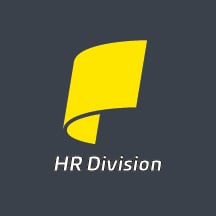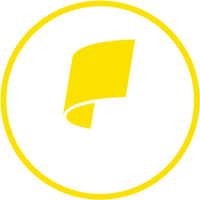As we head into the final quarter of 2022, there are a number of tasks small businesses need to tackle by the end of the year. Here are some of the most important related to payroll, tax, compliance, benefits, and general HR.
 File Form 941. File IRS Form 941, Employer’s Quarterly Federal Tax Return, if you paid wages subject to employment taxes. If you timely deposited all taxes due, you have 10 additional calendar days to file the return. IRS Form 941 is due Oct. 30, 2022, for Q3 2022, and Jan. 31, 2023, for Q4.
File Form 941. File IRS Form 941, Employer’s Quarterly Federal Tax Return, if you paid wages subject to employment taxes. If you timely deposited all taxes due, you have 10 additional calendar days to file the return. IRS Form 941 is due Oct. 30, 2022, for Q3 2022, and Jan. 31, 2023, for Q4.
Submit Deferred Tax Responsibilities Under the CARES Act. If you took advantage of the Coronavirus Aid, Relief Economic Security Act (CARES Act) employer Social Security tax deferral for 2020, you must pay the remaining installment by Dec. 31, 2022.
Schedule Special Bonus Payrolls. Make sure all special bonus payrolls have been scheduled. Also, verify that all taxable fringe benefits were withheld from paycheck(s) during the year. If not, make necessary adjustments before the last payroll of the year.
COMPLIANCE
Provide QSEHRA Plan Notice. Applicable small businesses, generally those with less than 50 employees that don’t offer a group health plan, can contribute to their employees’ health care costs through a Qualified Small Employer Health Reimbursement Arrangement (QSEHRA). A QSEHRA allows small employers to provide non-taxed reimbursement of certain health care expenses, like health insurance premiums and coinsurance. For QSEHRA plans that begin Jan. 1, 2023, you must provide a notice to each employee by Oct. 3, 2022.
➡️➡️Read More: How Outsourcing Benefits Small Businesses
Distribute FSA Covered Expenses Reminder. If you offer a Flexible Spending Account (FSA) as part of your benefits program, remind employees to submit receipts and supporting documentation for any incurred covered expenses. The deadline to submit 2022 receipts for reimbursement is Dec. 31, 2022. Some plans differ, so check your plan’s submission deadlines as well as available grace periods and/or carryover options.
 Review All Insurance Policies, including Workers’ Comp. Contact your insurance broker to determine if you need to adjust your liabilities to cover additional exposure. Also, check with your Workers’ Compensation broker to determine if any changes in your work environment or staff work assignments may affect your exposure and codes currently on your account.
Review All Insurance Policies, including Workers’ Comp. Contact your insurance broker to determine if you need to adjust your liabilities to cover additional exposure. Also, check with your Workers’ Compensation broker to determine if any changes in your work environment or staff work assignments may affect your exposure and codes currently on your account.
Conduct Nondiscrimination Testing. Non-discrimination testing is a set of IRS tests that reviews the fairness of an employer’s benefit plan. Employers who offer a 401K, 125 Premium Only Plan (POP), and flexible spending account (FSA) must conduct non-discrimination testing on the last day of their plan year to ensure that benefits are available to all eligible employees under the same terms. By conducting early tests, you can modify plans accordingly. For calendar year plans, the deadline is Dec. 31, 2022.
Update Workplace Labor Posters and Notices. Requirements for posting labor posters differ by state, such as EEOC notices about employment rights, FLSA minimum wage posters, and OSHA notices about workplace safety. Review any changes to applicable wall posters in the state where you have employees and electronic posters for remote workers.
BENEFITS
 Review 2023 Health Plans Against New Affordability Thresholds. Review your employee health plan to make sure it satisfies the Affordable Care Act (ACA) affordability threshold requirements. The affordability threshold is the highest percentage of household income an employee must pay for monthly health insurance plan premiums, based on the least expensive employer-sponsored plan offered that meets the minimum essential coverage requirements required under the ACA.
Review 2023 Health Plans Against New Affordability Thresholds. Review your employee health plan to make sure it satisfies the Affordable Care Act (ACA) affordability threshold requirements. The affordability threshold is the highest percentage of household income an employee must pay for monthly health insurance plan premiums, based on the least expensive employer-sponsored plan offered that meets the minimum essential coverage requirements required under the ACA.
The IRS lowered the 2023 employer health plan affordability threshold requirements, or cost-sharing limit, to 9.12% of an employee’s household income. This percentage is down from the limit of 9.61% set in 2022. The adjusted threshold percentage applies only to a plan year — not a calendar year. Non-calendar-year plans must use 9.61 percent to determine affordability in 2023 until their new plan year starts.
Prepare and Distribute Annual Medicare Part D. If you provide prescription drug coverage, you must distribute a creditable coverage notice, Medicare Part D Notice of Creditable Coverage, to plan participants by Oct. 14, 2022.
Prepare and Distribute Annual Compliance Notices. Each year, applicable employers are required to distribute certain compliance notices to employees. Examples include a Summary of Benefits and Coverage (SBC), privacy practices on personal health information (HIPPA), the Children's Health Insurance Program Reauthorization Act on health coverage assistance (CHIPRA), and Women’s Health and Cancer Rights Act (WHCRA).
➡️➡️Read More: Health Benefits Beyond Health Insurance
Also, make sure that your wellness program follows the compliance requirements under Equal Employment Opportunity Commission (EEOC), Americans with Disabilities Act (ADA), and Genetic Information Nondiscrimination Act (GINA).
GENERAL HR
 Review Requirements of State Voting-Leave Laws. The 2022 midterm elections will be held on Nov. 8, 2022. While federal law does not require employers to give employees time off to vote, a majority of states do. Review the voting-leave laws in the states where your business operates to determine if you must provide employees time off.
Review Requirements of State Voting-Leave Laws. The 2022 midterm elections will be held on Nov. 8, 2022. While federal law does not require employers to give employees time off to vote, a majority of states do. Review the voting-leave laws in the states where your business operates to determine if you must provide employees time off.
Review, Update and Distribute Annual Internal Documents. The end of the year is a great time to review all annual documents that must be distributed to employees, such as employee handbooks, updated workplace policies, and the calendar of company-observed holidays for the coming year.
Update Employee Records. Make sure all employee information is updated and that outdated employee records are disposed of properly.
Need Help?
Depending on the type of business and industry, your checklist may be different and even more complex. If so, contact us. By partnering with an IRS-certified PEO like Propel HR, you gain access to a team of HR experts to help you navigate the complexities of your business as well as stay compliant.
PLEASE NOTE: This information is for general reference purposes only. As we continue to work during an active pandemic, laws, regulations, and filing deadlines are likely to change. Please check with the appropriate organizations or government agencies for the latest information and consult your employment attorney and/or benefits advisor regarding your responsibilities. In addition, your company may be exempt from certain requirements and/or be subject to different requirements under the laws of your state. (Updated Sept. 20, 2022)
About Propel HR. Propel HR is an IRS-certified PEO that has been a leading provider of human resources and payroll solutions for more than 25 years. Propel partners with small to midsized businesses to manage payroll, employee benefits, compliance and risks, and other HR functions in a way that maximizes efficiency and reduces costs. Visit our new website at www.propelhr.com.











